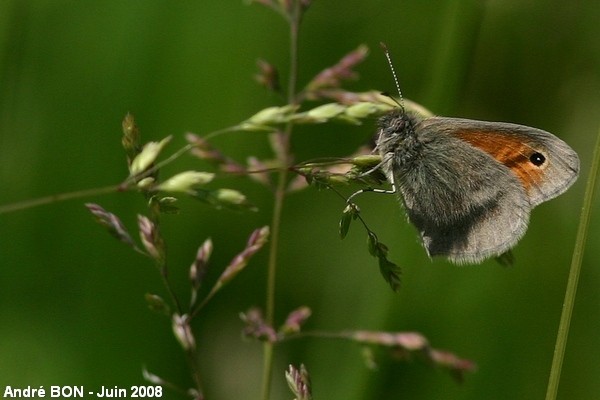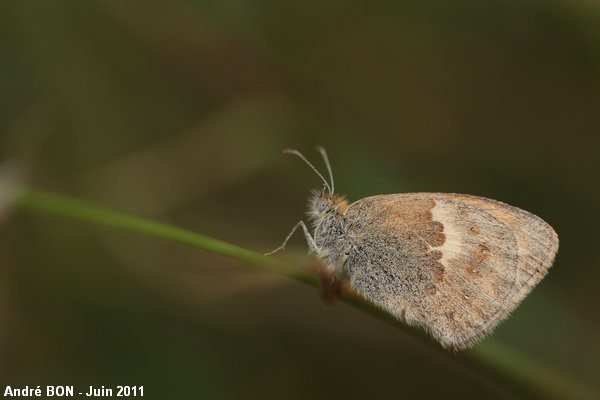



| Small Heath (Coenonympha pamphilus (Linnaeus, 1758)) |




|
|
Scientific name: Coenonympha pamphilus (Linnaeus, 1758) Common name: Small Heath French name: Procris Order: Lepidoptera Suborder: Rhopalocera Family: Nymphalidae Subfamily: Satyrinae Wingspan: 30-35 mm. Biotope: Meadows, gardens, and other grasslands. Geographic area: Europe except northern Scandinavia. Asia and north-western Africa. Flight time: April to September. Number of generations : 2 (more in the south). Caterpillar: Thin, green, with longitudinal pale lines. Host plant: Graminae, like Fescues (Festuca spp.), Bents (Agrostis spp.) and Meadow-grasses (Poa spp.). |
The upper side of the wings of the Small Heath is orange-brown with a small dark eyespot on the forewing. The outer margins are grey and thin. The eyespot can be seen on the under side with a white spot in the centre. It is fringed with yellow. The under side of the hind wings is greyish brown, darker on the basal half, and shows one line of very reduced eyespots which are sometimes missing. Both sexes are similar. The Small Heath over winters as a caterpillar. |
| [To know more about the Small Heath] [Next picture] [Top] |

|
Small Heaths are very small and shy butterflies. You need to lean down to see them in the grasses. |
| [To know more about the Small Heath] [Next picture] [Previous picture] [Top] |

|
When will I shoot a photo of a Small Heath with wide open wings? |
| [To know more about the Small Heath] [Next picture] [Previous picture] [Top] |

|
I often observe Small Heaths but they are always alone. |
| [To know more about the Small Heath] [Previous picture] [Top] |

|
This Small Heath has hidden the bright colour of its fore wings when I got close. This behaviour may be some kind of camouflage when facing a potential predator. |